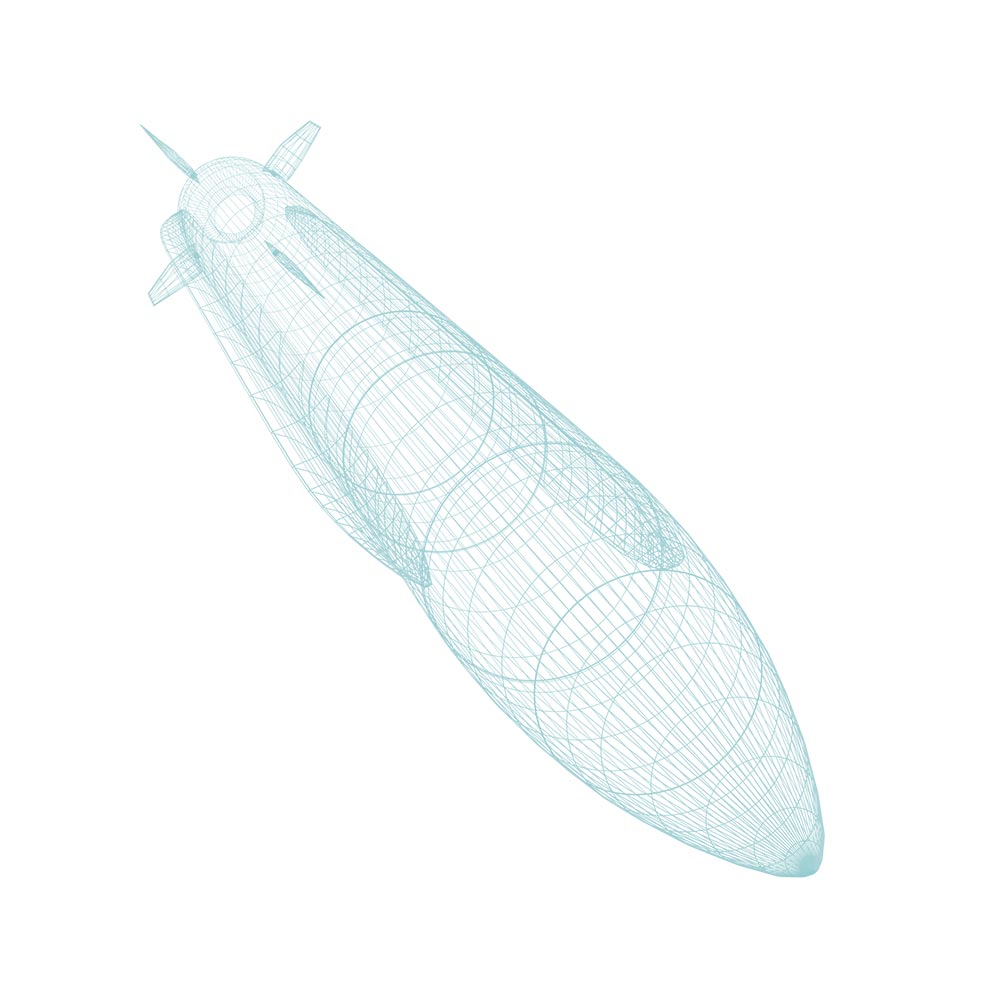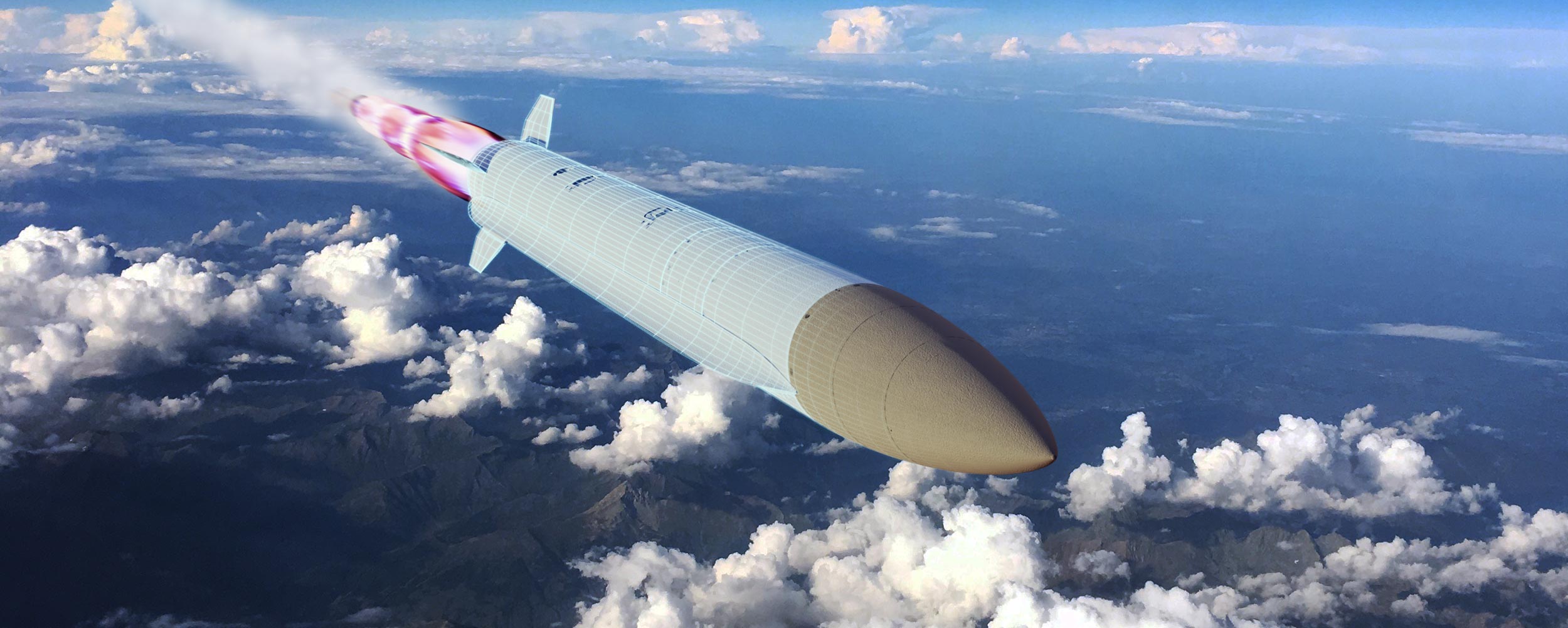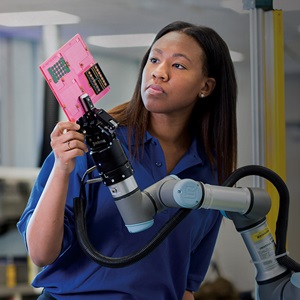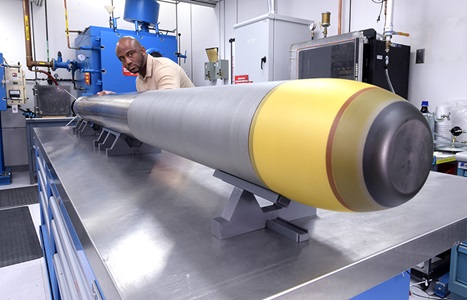The Next Evolutionary Step in Modeling and Simulation
Ditching the Documents
Digital Engineering Speeds Development and Deployment of Advanced Weapons

By Brooks McKinney, APR
Today's warfighters face adversaries whose weapons capabilities are evolving faster than ever. Northrop Grumman is using digital engineering to help its U.S. Department of Defense (DoD) customers disrupt and stay ahead of this cycle.
"Digital engineering is about model-based everything: replacing conventional, document-based engineering processes with digital models, all the way from concept development and early design through manufacturing, integration and test," explains Phil Conners, an Advanced Weapons (AW) engineering director for Northrop Grumman.
Conners leads AW's efforts to integrate digital engineering into its tactical missiles business. He noted that the key benefits to customers will be higher-performance weapons that are developed, tested and fielded faster than ever — and with the confidence that they'll outpace the weapons capabilities of the nation's enemies.

Digital Engineering Starts at Inception
As Conners emphasizes, digital engineering begins in the earliest conceptual phases of developing a new weapon. His tactical missile specialists develop 3D models of several variations of a proposed missile's outer mold line — including its length, diameter, wing length, control surfaces and nose shape. Then they analyze those models with modeling and simulation tools to determine a "best value" based on customers' requirements. They also consider different payload options and technologies.
"We fly these conceptual 3D models against simulated targets and threats to figure out which model will perform best in operational scenarios prescribed by our customers," says Conners.
A fundamental difference between the traditional approach to missile development and this current approach is the use of model-based systems engineering (MBSE), a subset of digital engineering. As its name implies, MBSE relies on the use of electronic models rather than documents to enable information exchange among engineers.
"We used to define our system performance requirements in written documents, but documents can get out of date and out of sync with reality very quickly," Conners points out. "Now we use models to capture our requirements and architecture, which is a much more effective way to communicate across the team. Electronic models also allow us to easily update or change the model without losing sync among team members."
Breaking the Stovepipes with Integrated Engineering Tools
Northrop Grumman has been using modeling and simulation tools to develop tactical missile systems for years, according to Chris McNutt, the Northrop Grumman chief engineer for the Stand-in Attack Weapon. However, too often, those modeling and simulation systems have been stand-alone systems unique to a particular engineering discipline.
"Historically, folks in the systems engineering, hardware, software and manufacturing domains have each had their own development and testing tools," he observes. "Under digital engineering, those disciplines are connected to each other through the integrated development environment."

Digital Twin for the Win
Hank O'Shea, chief engineer for AW’s Advanced Programs team, notes that the key to achieving this integrated development environment is establishing a common, centralized point of ground truth for all the engineering disciplines involved in a product's life cycle.
Enter the digital twin, a unique digital model of the new weapon system.
"The digital twin includes not only 3D descriptions of our physical offering but also data from its operational history (flight hours, engine hours, etc.) that can be used to anticipate maintenance requirements or predict performance problems," he explains.
The integrated development environment of this style of engineering can also involve customers, O'Shea notes. "Simulations that we create in a digital-engineering environment can be integrated into higher-level simulations of operational scenarios. These distributed simulations can show a customer how our product is interoperable with the system of systems they're hoping to achieve and deploy for a certain mission."
Transferring the Digital Workflow to the Manufacturing Process
Eventually, of course, developing a new missile system requires integrating real hardware in a laboratory test environment. But even then, as Conners explains, the methodologies of digital engineering will be integral to success.
"As we begin integrating actual components, we also plan to start integrating models of each of those components to validate that the missile was built properly, that the interconnects work as expected and that communications protocols between different parts of the system work as designed," he says.
When the company conducts a complete virtual flight test of the new system, it can use the data that generates to make predictions about the outcome of an actual flight test. Data from the real flight tests can then be used to make updates that improve the accuracy of the modeling environment.
Conners advises that, to help customers achieve these anticipated time and cost benefits, these new methodologies will have to be integrated into the missile manufacturing process.
"We've got several initiatives underway to help reduce manufacturing span times," he says. "For example, we've implemented a manufacturing execution system that replaced our paperwork instructions with all-digital work instructions. We're also introducing augmented reality systems to help production workers visualize how best to assemble or install key parts of the missile."
Digital Engineering Builds on Fundamentals
For AW, Conners notes that we are only beginning to unlock the efficiencies of our digital transformation, but the signs of progress are unmistakable. "We're already seeing significant time savings from using model-based systems engineering and being able to share those models digitally with our customers" he says.
More Innovation Stories
Read all stories about advanced technology and innovation >>


